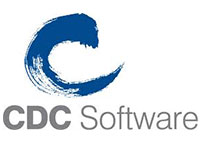
Sales has had a rough couple of years. Although customers have been harder to find, the pressure on sales pros to produce has become ever greater.
In some U.S. firms, the lowest-performing 40 percent of the sales force is replaced annually. In other businesses, departures or layoffs of sales staff aren’t followed by new hires; instead, the quotas of the departed sales people are divided up among the survivors and heaped upon their own already significant quotas.
When sales pros think about this situation, they often think of technology as the answer. But which technology? Failing to understand that question can dig sales into an even deeper hole.
More Leads?
The answer is to consider the problem in the correct light. Often, the answer is seen as an increase in the quantity of leads — and lead generation software can indeed scoop up more data about more people in less time than ever before.
But the answer does not lie in the number of leads. Often, those leads are less ready or likely to buy than the leads being collected before. More leads result in sales pros splitting their time between more people — and spending less time working on leads that are likely to pay off. The result of more leads can in fact be fewer sales if the sales staff doesn’t know how to manage them.
Lead generation software is useful, but it’s more useful when used in conjunction with sales enablement tools. Those tools make sales people more productive and, at the same time, help them focus their efforts on the right targets. It’s a double whammy effect that will allow a smaller sales staff to meet today’s greater sales goals.
Cut to the Chase
Here’s an example of what a sales enablement tool is. InsideView is one of a class of sales intelligence tools that arrived on the market in force about three years ago — Jigsaw and Hoover’s are two similar services, but I’ll focus on InsideView because it counts those two services among its 20,000 sources of data.
The product automatically finds structured and unstructured data about potential customers and uses it to create the most accurate and up-to-date profile possible. This gives sales people a tool not just for qualifying a lead, but for developing a rapport with the customer once contact has been made.
It can also be built into processes to make sales more efficient. Think of an insurance company that includes a peek at InsideView profiles before making a call to a potential customer.
Knowing the family and property ownership status of that potential customer can save both the customer and the sales person time. The customer doesn’t have to go into great depth about his circumstances, and the sales person can go into the call with policy quotes already developed that are tailored to the potential customer.
From Hot to Sizzling
Another example is DemandBase, a product that allows businesses to see in real time which customers are viewing their websites. The company can’t identify individual viewers, but it can tell you where the view is coming from, and it correlates those locations to likely contacts.
Speed matters — a call within an hour of a visit produces an 81 percent greater close rate than a call after two hours. Perhaps more critically, the service sends real-time notifications to sales people when an existing account or a business on their “watch list” views their site. That allows them to bump up that business on their “to-do” list and use their time talking to customers that are most likely to buy.
By themselves, tools like these are useful. Used in combination, they provide exponential power. In this case, DemandBase can identify Web page viewers looking at critical pages (like price lists) in real time. Then InsideView can return a profile of the probable viewer.
An inside sales person can go from an alert of a hot lead to having a fairly complete picture of who that lead is, almost immediately — without any of the research time that was necessary in the past.
Neither of these tools is focused on delivering more leads, but they can allow sales people to work more leads, and to get better results from that work. By maximizing their time and efforts, these technologies and others like them promise to allow a smaller sales force to deliver a greater volume of sales.






















































